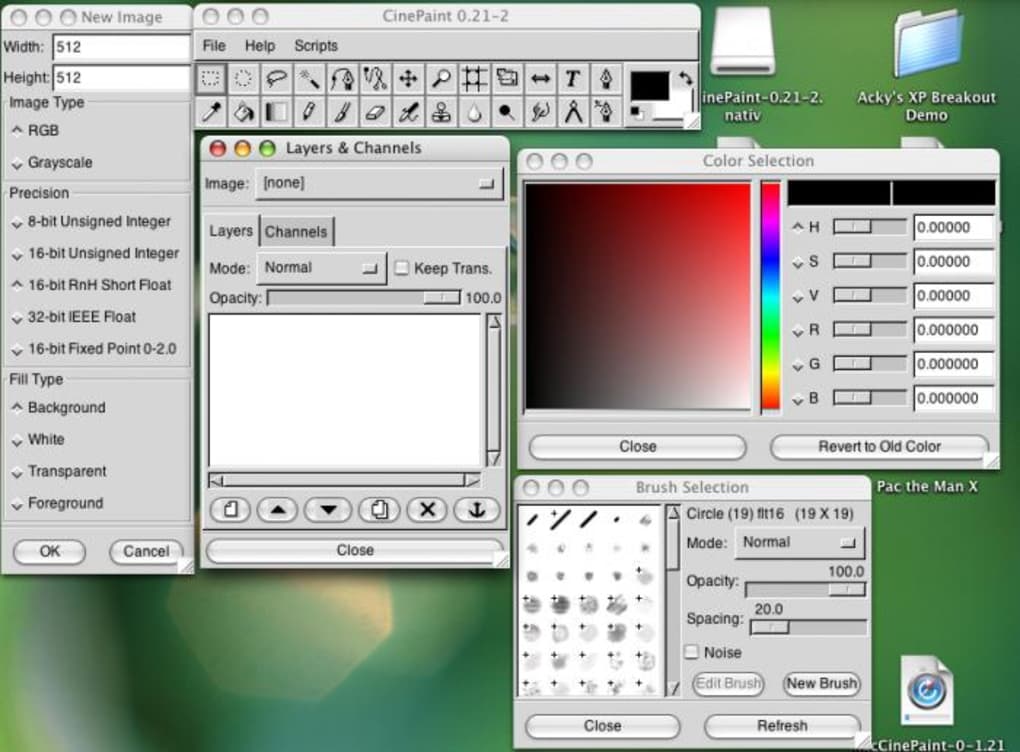

Surely it will take some time to have ICC profiles available for many cameras by default. Especially if you want a similar or the same appearance on different media and like to communicate appearance and colour reliable.īut don't forget, profiles do not substitute long years experienced printers. But this is very subjective.įor preparing images for reproduction on different kind of media there are not much alternatives to ICC profiles. None the less good results from a artists point of view can be achived without any calibration if there is no need to match the original scene. The tables can be stored in ICC profiles. Of course the raw image must be supported by the file loader.īecause of many sensors are working not completely linear, a colour correction with three dimensional colour tables is suggested.
#Cinepaint tutorial free#
A often missed feature is a free selectable target profile. With the individual profile one can colourimetrically better match a situation.

#Cinepaint tutorial software#
Software from manufacturers of higher quality camera allows freely selectable camera profiles, and as well applying the profile to the original bit depth of the sensor. The calibration is used for the internal conversion to 8-bit jpegs for consumer cameras.

The demand is stated to deliver data in an open documented format like the tiff based DNG.Ĭamera manufacturers calibrate they're devices very often in a good manner. All parts of the image belong to the photographers work and shall not be encrypted or otherwise made unreachable by the original author. It is mostly a user activity to promote open standards for digital cameras. Related to digital cameras I like to point to the OpenRaw initiative. looseless compression should be used for manipulation and archiving (PNG and TIFF) high colour- and geometric resolution don't throw away, overhead is always good thing for manipulation and archiving fit format and resolution to needs of your actual usage, for instance, use highly compressionable formats for Internet content (JPEG) as well as a smaller geometrical resolutions Open documented formats RAW for instance offers its advantages in the long run only, when it becomes standardised like in the 'Digital Negative Formate' DNG or alternatively TIFF or PNG Colour references are always a good idea to place in a image, either a reference image like a gray scale card or tag the image with a profile describing the devices behaviour. As well in a future workflow you may get more out of hidden qualities from your raw data than you expect today. They are very often a better starting point for derivatives than anything else. Original raw data should be preserved wherever economically possible. I will give some very basic rules for work with digital images: Profiling and device settings can not be handled in this text.īecause there are so many possibilities in a digital photographic workflow, it may be interesting to have guidelines for an good orientation. The used images should have 10 or more bit precision (or bit depth) per channel. Terms like gradation, white point, colour depth and editing of curves are expected to be known.Ĭolour depth means in this article always on single channel, from three for Rgb images. Reading this tutorial needs serious photographic knowledge from readers side. The used colour spaces have enough precision and gamut to hold all nuances and level of saturation without substantial loss of fine colour details or changing of strong saturated colours within device gamuts. This tutorial is written with attention to preserve the photographical information during all steps of manipulation.

Working on an not everydays motive we will show a photograph workflow within CinePaint within this tutorial. Therefore its importance in the open source world will increase. Goals are the improvement of quality and the most identical exchange across application and system borders. From digital camera to printĬolour management within the guidelines of the International Color Consortium ( ICC ) is very wide spread and a in some fields very successful method. CinePaint - 16-bit from digital shoot to printout CinePaint – 16-bit imaging.


 0 kommentar(er)
0 kommentar(er)
